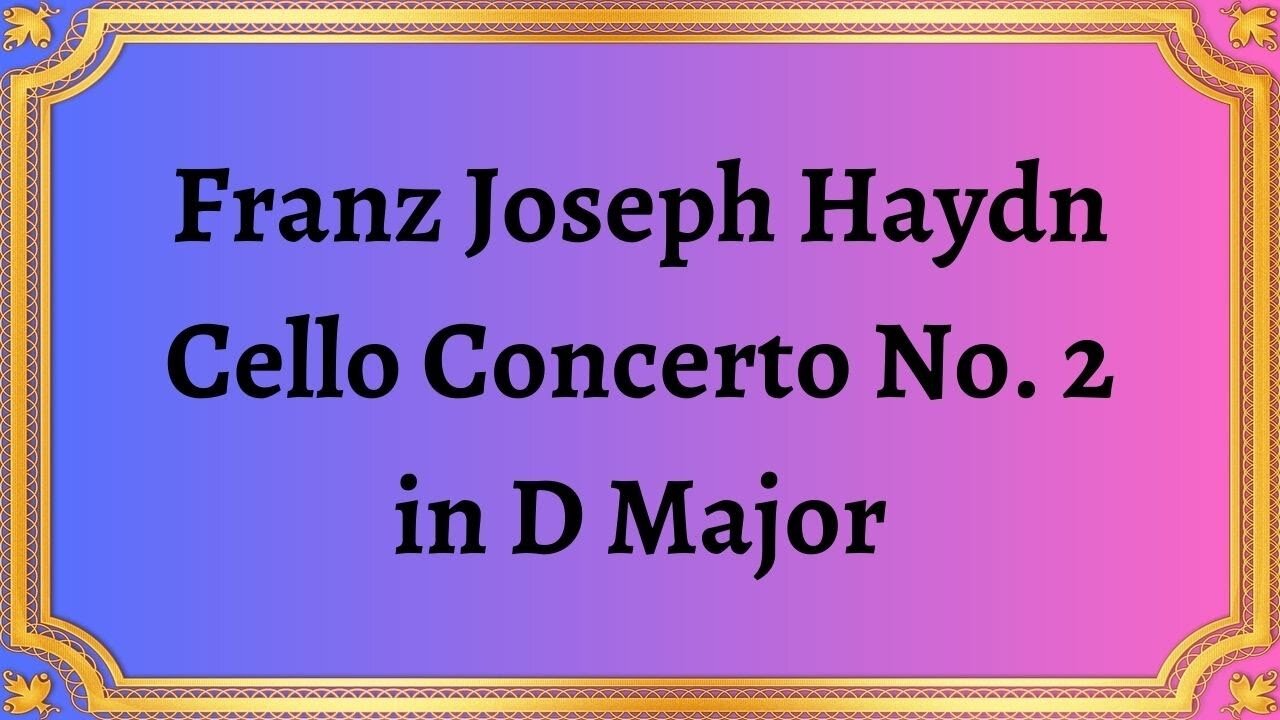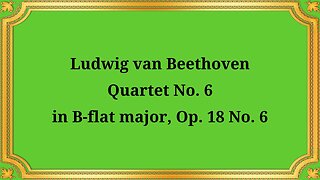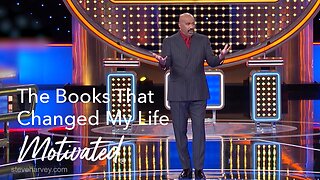Premium Only Content

Franz Joseph Haydn Cello Concerto No. 2 in D Major
#Haydn #CelloConcerto #DMajor #ClassicalMusic #ClassicalPeriod #BaroqueMusic #StringInstruments #MusicComposition #MusicalAnalysis #MusicalHistory #ConcertPerformance #Soloist #Orchestra #MusicAppreciation #MusicEducation #MusicHistory #Musicology #PerformingArts #classicalconcerts
Franz Joseph Haydn's Cello Concerto No. 2 in D Major is a beautiful example of classical music, composed in 1783 for a solo cello and a full orchestra. The work is known for its creative interplay between the soloist and the orchestral ensemble and showcases the composer's technical mastery of classical music forms.
The Cello Concerto No. 2 in D Major is a three-movement work. The first movement, Allegro moderato, is an upbeat and playful introduction. It begins with the full orchestra, followed by the solo cello's entrance, and sets the overall tone and mood for the entire piece.
The second movement, Adagio, is a slow lyrical melody, with the solo cello playing an emotive and delicate melody. This movement enjoys a calm and contemplative atmosphere with a sense of poignancy and introspection to the music that is classic to the work of Haydn.
The third and final movement, Rondo, Allegro, is a complex, fast-paced, and vibrant piece. The cello opens with a lively melody, and the full orchestra soon joins in, creating an energetic and dynamic exchange between soloist and orchestra. This movement also features numerous solo spots for the cellist to demonstrate their virtuosity and excellent musical capabilities through a wide range of bowing techniques, harmonics, and complex rhythm patterns.
The Cello Concerto No. 2 in D Major was groundbreaking for the time it was composed, and it set new standards for cello concertos, particularly through its technicality, the use of innovative rhythms, and Haydn's signature handling of tonality and musical structure. This musical composition is a testament to Haydn's creativity and musical genius, as well as exemplifies the Classical Era's development period in music.
In conclusion, Franz Joseph Haydn's Cello Concerto No. 2 in D Major is a brilliant example of classical music, capturing a wide range of emotions and exhibiting both technical and melodic prowess. It is an enduring masterpiece of classical music, showcasing the cello's beautiful range of sound. The concerto remains a cornerstone for cellists and classical musicians worldwide and a cherished classic acknowledged by music listeners across various generations.
You have the opportunity to support the channel https://destream.net/live/RadSiarAl/donate
-
 22:54
22:54
Classical music_Music Inspiration
29 days agoLudwig van Beethoven Quartet No. 6 in B-flat major, Op. 18 No. 6
382 -
 40:15
40:15
NAG Daily
15 hours agoThe Rezendes Rundown Ep. 19 - Mad Bad Science
28.1K3 -
 31:57
31:57
Uncommon Sense In Current Times
18 hours ago $0.78 earnedThe DEI Housing Hoax | Dan Huff on Zoning, Manufactured Crisis & the War on Suburbs
33.4K1 -
 2:55
2:55
From Zero → Viral with AI
1 day ago $0.47 earnedAI Misconceptions: Why Small Businesses Hold the Real Advantage 🚀
27.9K -
 1:59:26
1:59:26
BEK TV
1 day agoTrent Loos in the Morning - 9/25/2025
29.8K -
 2:39
2:39
The Official Steve Harvey
1 day ago $0.91 earnedThese books didn’t just change my mind, they changed my life. 📚💯
27.4K -
 1:35:35
1:35:35
Investigate Everything w/ Brian O'Shea
15 hours agoPart 1: "Evil & Logistics: Why is the Left So Good At Both” w/ Brian O’Shea & Bill Stebbins
29.8K4 -
 1:20:31
1:20:31
CharLee Simons presents DO NOT TALK
1 day agoR.I.P. MEDIA FREAKS
21.6K1 -
 16:39
16:39
Professor Nez
21 hours ago🚨PRICELESS: Trump Just EMBARRASSED Macron in New York
95.4K22 -
 25:51
25:51
DeVory Darkins
20 hours ago $7.27 earnedDemocrats ghosted and stunned by Trump as Routh attempts to off himself after guilty verdict
30.5K69